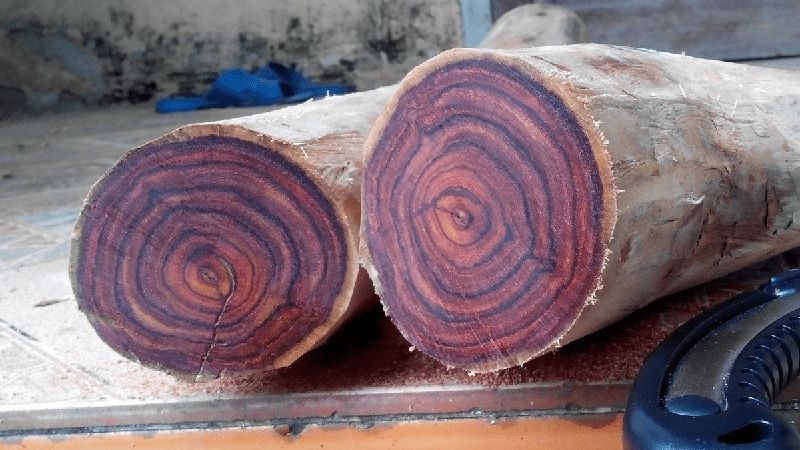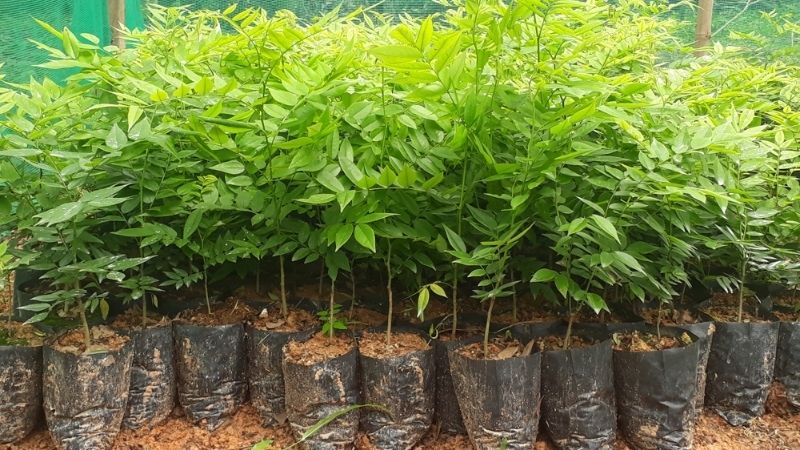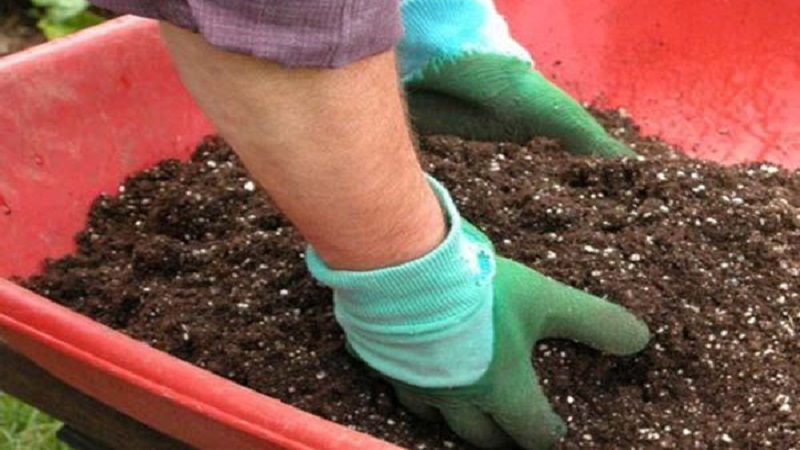Red balau, or red balau, is a highly valuable export commodity with a high economic value. Its roots have a strong grip, making it useful for flood and natural disaster prevention. Let’s take a closer look at the characteristics, cultivation, significance, and identification of this unique tree.
1 What is Red Balau?
Origin and Significance of Red Balau
Red balau, also known by its common name, dalbergia tonkinensis, belongs to the Fabaceae family. It is a large tree species typically used for indoor furniture.
Significance of Red Balau
Economic Significance
Red balau is characterized by its pleasant fragrance and air-purifying properties. It is now classified as a rare and precious wood, commanding a very high price. A ten-year-old red balau tree can fetch up to 10 million VND per kilogram.
During the royal era, red balau was used for high-end interiors, fragrances, and medicinal purposes. Today, it is crafted into furniture such as tables, cabinets, chairs, and Buddha statues.
In traditional medicine, oil extracted from red balau wood is an effective treatment for bone inflammation.
 Red balau fetches a high price
Red balau fetches a high price
Feng Shui Significance
In feng shui, red balau is believed to bring prosperity to its owners. Its distinctive fragrance is considered beneficial to one’s health. This type of wood is often used to make furniture, Buddha statues, and statues of gods to attract good fortune and wealth.
 Feng shui significance of red balau
Feng shui significance of red balau
Characteristics and Classification of Red Balau
Red balau is a large tree species with distinctive features:
- It is a woody tree with a sturdy trunk, a wide-spreading canopy, and an average height of 6-12 meters. It is currently listed as a rare and protected species.
- Its leaves resemble bird feathers, with 10-15 leaves per branch, growing alternately, and a greenish hue.
- The flowers of the red balau are pale yellow, usually growing in clusters, and blooming between February and March each year.
- The wood of the red balau is reddish-brown with a fine grain, making it ideal for furniture, doors, etc. Red balau trees are commonly found in Central Vietnam and the Central Highlands. They can also be spotted in rural temples, family gardens, and along ancient streets and parks in Hanoi.
 Pale yellow flowers of the red balau
Pale yellow flowers of the red balau
Distinguishing Red and White Balau
| Distinctive Features | Red Balau | White Balau |
|---|---|---|
| Leaves | Leaves grow alternately | Leaves grow symmetrically |
| Flowers | Red balau flowers grow in clusters, are small, and pale yellow | White balau flowers are large and white |
| Trunk and Fruit | The trunk of the red balau is brown and rough. | The white balau trunk is green and smooth. |
 Distinguishing red and white balau
Distinguishing red and white balau
2 Cultivation and Care of Red Balau
Home Cultivation of Red Balau
Selecting Seedlings
Choose seedlings that are 30-100cm tall, 3-6 months old, and have a root diameter of 4-5mm.
Avoid seedlings that show signs of pests or diseases.
 Choose healthy seedlings
Choose healthy seedlings
Preparing the Soil
Red balau can tolerate low humidity environments, so moisten the soil before planting.
Mix the soil with bio-organic fertilizer and manure to ensure it is loose and rich in nutrients for the tree’s growth.
The ideal size for each planting hole is 50*50*50cm.
 Mixing soil with bio-organic fertilizer
Mixing soil with bio-organic fertilizer
Planting Season
The planting season varies depending on the region due to differences in climate. For Northern Vietnam, the best time to plant is from February to April; for the North-Central region, it is from August to November; for the South-Central region, it is from October to January; and for the Southern and Central Highlands regions, it is from June to September.
 Planting season for red balau
Planting season for red balau
Planting Techniques for Red Balau
 Planting techniques for red balau
Planting techniques for red balau
Caring for Red Balau
Red balau is easy to grow and thrives in well-lit areas, making its care relatively simple.
Watering Techniques
Red balau prefers moist conditions, so watering it 2-3 times a week is sufficient to meet its water needs.
 Watering the red balau
Watering the red balau
Pruning
Pruning dry and old branches stimulates new growth, encourages the development of new buds, and reduces the risk of pest infestations.
Fertilizing
During the first three years of growth, clear weeds around the base of the tree and fertilize 2-3 times a year with 0.1-0.2kg of NPK fertilizer per tree.
In subsequent years, weed once or twice a year and continue fertilizing, increasing the amount of NPK fertilizer by 0.1-0.2kg per tree with each passing year to ensure adequate nutrition.
 Fertilizing the red balau
Fertilizing the red balau
Pest and Disease Control
Red balau’s distinctive fragrance naturally repels insects, making it relatively pest-resistant. However, it is important to control soil-borne diseases by applying lime around the tree’s base once or twice a year.
 Preventing fungal diseases in red balau
Preventing fungal diseases in red balau
Notes on Cultivating and Caring for Red Balau
– Ensure you select the right type of soil for planting to promote the tree’s health.
– Pay attention to the weather and adjust the watering schedule accordingly.
– Provide adequate sunlight for the tree’s growth.
– Fertilize and protect the tree from pests and diseases.
3 Three Beautiful Images of Red Balau
 White balau flowers on a Hanoi street
White balau flowers on a Hanoi street
 A sea of white balau flowers
A sea of white balau flowers
 White balau flowers on the street
White balau flowers on the street
This article has provided a detailed overview of the characteristics, cultivation, significance, and identification of red balau. We hope you found this information useful.
2023 Lunar New Year Gift Ideas for Older Family and Friends
As 2021 approaches, families worldwide are gathering to celebrate the special bond between grandparents and their grandchildren. To show their love and admiration, these thoughtfully chosen gifts will bring a smile to the face of the elderly. Here, we have compiled a list of the 13 most meaningful Tet presents that can bring joy to our beloved grandparents.



































